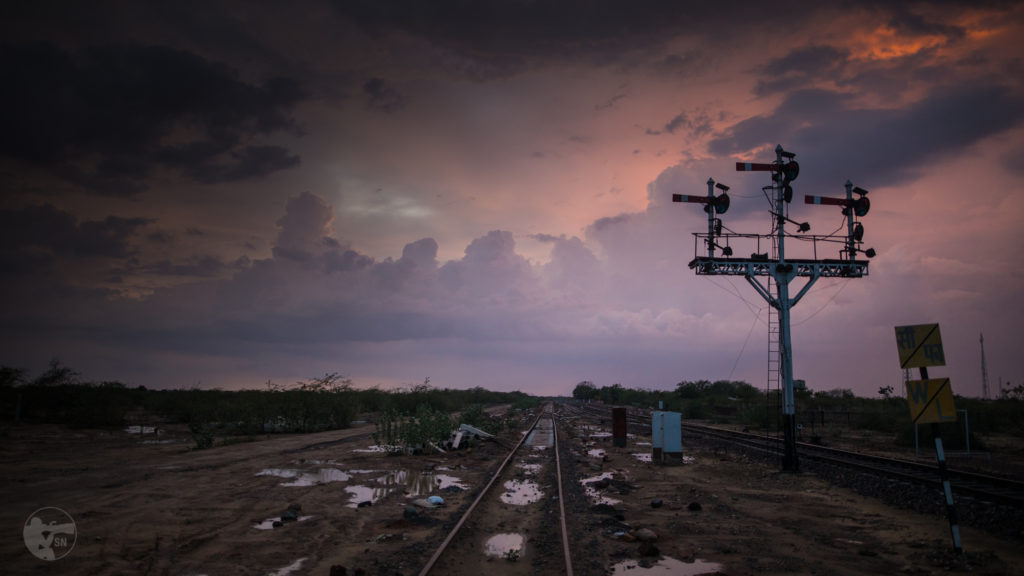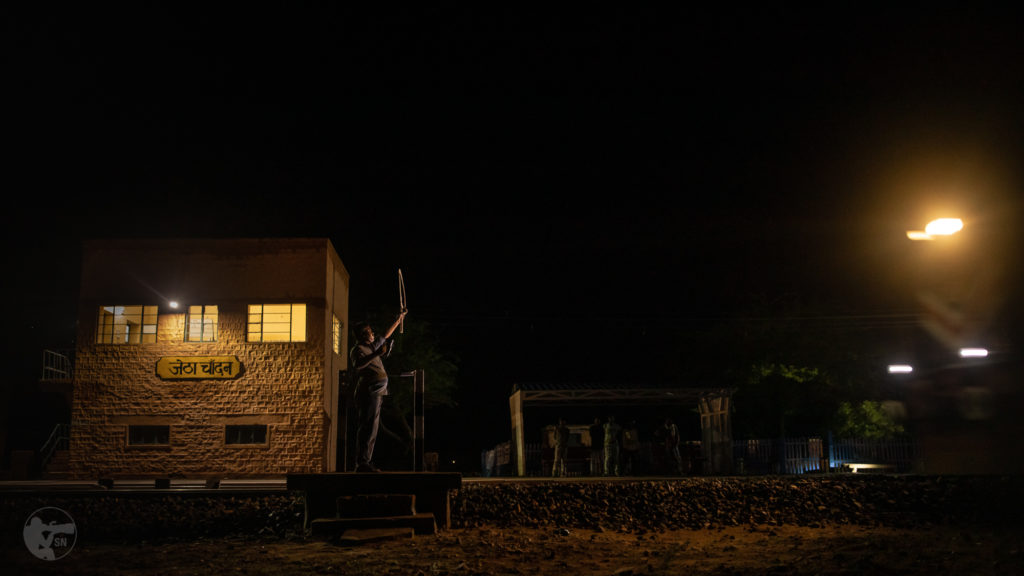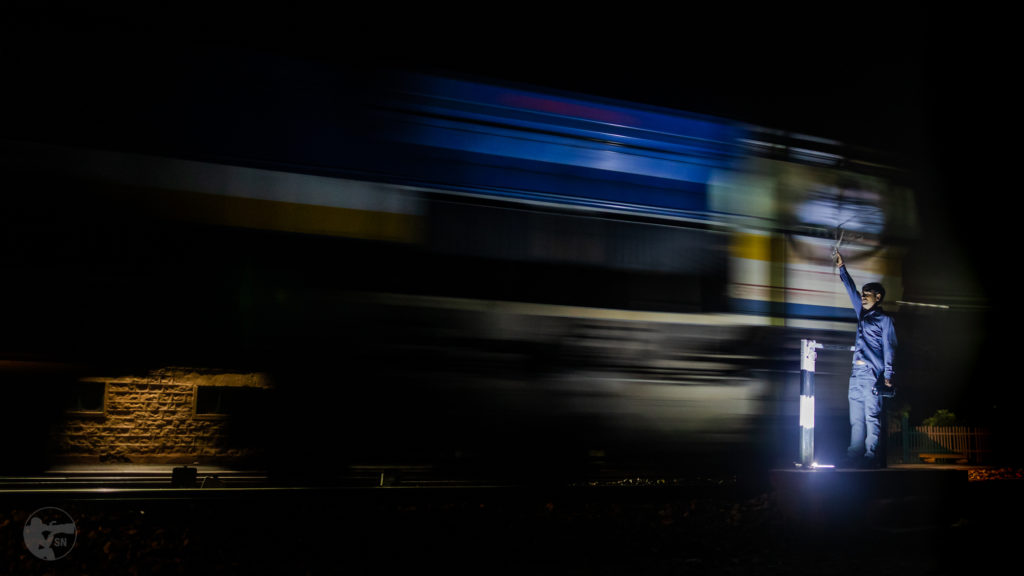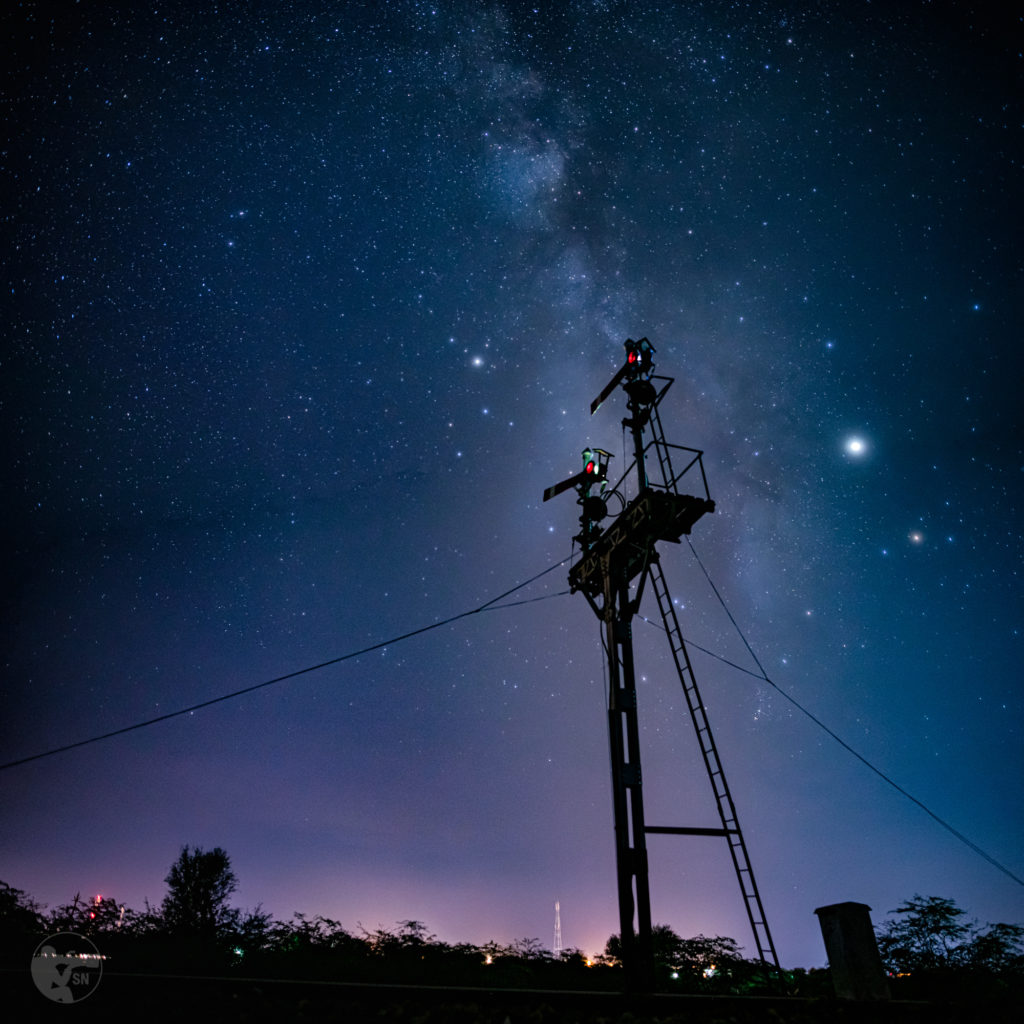Semaphore signals and night skies have been two favourite subjects of mine. However, given the incessant march of urbanization and the resultant light pollution, it has been incredibly hard for me to combine to two in a single image. And with the semaphores dwindling rapidly from the Indian Railways’ network, I was desperate to find a location where I could find pristine night skies and semaphore signals. It took months of virtual planning, using night sky mapping tools, Google Earth and railway timetables, and finally we were able to zero in on the desert sections outside of Jaisalmer – one of the last remaining bastions of the semaphore signal.

When we reach the outskirts of Jaisalmer, our best laid plans looked to be headed down the drain. The desert looked green – the monsoon had taken a detour and a decent amount of rain had fallen in the parts. And more predicted. The drive from Jaipur saw temperatures climb past 40°C and that did not bode good. The Runichha Express from Jaisalmer, greeted us amidst lush blooms of kikar.

And as it raced towards the horizon, we saw the gut-wrenching sight of a thunderstorm heading our way. From there on, it was just a question of when rather than if! Resigned to our fate, we drove on – and were overtaken by the storm in just a few minutes. Our plan for the the day was to camp for the night at Shri Bhadriya Lathi – a nondescript town which acts as the railhead for a popular temple. The station, however, boasts an impressive set of semaphores at either end, and those were the chief objects of attraction for us.

The clouds having dumped their load on the desert, were still hanging about. Rolling about in the sky, they seemed to be mocking us – exacting revenge for a crime from a previous life perhaps. Hoping against hope, we still set up our cameras in timelapse mode at dusk. But fate had other plans. Just as it turned dark, a bright lamp switched on straight in the middle of frame – a streetlight over the level crossing on the far side, blowing away the long exposures. There was no option but to abandon post for the night.

The next evening, we tried our luck at Jetha Chandan – a station near a tiny hamlet in the hope to beat the lights. The skies were still clouded when we got there, so we focussed on capturing the night token exchanges instead. The railways in the these parts have given up the use of flaming torches to mark the pointsman’s position, relying on modern LED lights instead. Nevertheless, the precision involved in the process was no less impressive.

There was plenty of traffic in the night to keep the pointsmen and our cameras busy. The whine of the locomotives, the blaze of the headlamps and the muted thwack of a successful collection – sights and sounds that fill the heart of a rail enthusiast with joy. And perhaps this made the Gods above feel a little guilty of robbing us from main objective and they decided to open up a tiny window in the skies – revealing the stars. Hastily, cameras were rearranged, tripods spread and settings fiddled constantly. And soon enough, the Milky Way rose in to the middle of frame – forming the backdrop to the signals that we had all been hoping far. Our perseverance had paid off.

The lights from the town and distant army encampments burned the lower half of our frame. Urbanization and human industry not sparing the desert either. Yet, it felt satisfying – dreaming of a photograph in your head for years, and then being able to make it come to life. I guess that is what photography is all about – sharing your imagination with others.
